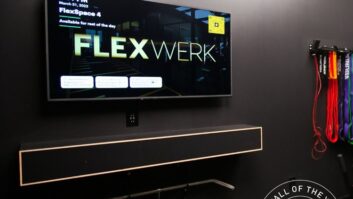The National Kitchen & Bath Association (NKBA) and John Burns Real Estate Consulting (JBREC) has released its most recent Kitchen & Bath Market Index (KBMI), which is aimed at measuring the health of the kitchen and bath industry. The KBMI for Q3 shows that despite a continued strong market, ongoing industry challenges are having a cooling effect on what has been a very positive full-year outlook. While the overall Kitchen & Bath industry continues to show healthy growth for the year, the overall index is down 4 percent quarter-over-quarter as lingering issues caused by the pandemic seem to be catching up to consumer sentiment. Despite this, the industry is coming off of a record-breaking quarter of growth in Q2, which has fueled projections for the year at around 12 percent growth in sales year-over-year, with many members still encouraged about future growth in 2022.
“The latest results fall slightly short of the very strong projections from Q2 but are a positive sign that the Kitchen & Bath industry will finish the year strong,” says Bill Darcy, chief executive officer, NKBA. “Persistent challenges such as supply chain disruptions, cost of materials, and availability of skilled labor are hampering the industry’s ability to take full advantage of strong demand.”
Like the custom installation market, the Kitchen & Bath industry was able to thrive early in the pandemic, registering historic levels of growth as homeowners enjoyed higher home equity levels and were eager to renovate as they continued to spend more time in their homes. However, ongoing challenges are beginning to catch up with the sector as members rated the health of the industry nearly 4 percent lower compared to Q2 as consumers, who early in the pandemic were willing to face potential delays in their project timelines and rising costs to materials, are now becoming more inclined to wait until 2022 with the hopes that prices will stabilize. As a result, the measure of current and future business conditions saw a more cautious outlook from respondents — down 6 percent and 3 percent, respectively, with members expecting more consumers to continue pushing projects off into 2022.
Delays in the global supply chain is one of the main areas of concerns for members as lead times for domestic and foreign materials reportedly push well over six-plus weeks, leaving them in a tough position to keep up with the demand. Showing its resiliency, the industry has developed creative solutions to mitigate the impacts with retailers packing storage facilities with excess inventory and buying in bulk whenever possible; construction firms adding additional up-front time to projects to mitigate delays, and manufacturers stocking up on raw materials and focusing on fewer product lines to streamline production.
“The positive news is that despite the ongoing challenges, the report found that consumers are opting to delay their projects rather than cancel them. When customers do decide to execute on the remodel, they tend to gravitate towards higher-end products, as well as lumping several rooms into one overall project, helping fuel a projection of 9 percent growth in 2022, positioning the sector for another strong year,” continues Darcy.
Among the report’s key findings:
- Positive Close for 2021 Projected: The Kitchen & Bath industry continues to show healthy expansion despite ongoing challenges, with members giving it a 78.7 overall, slightly down from the 79.8 and 82.3 scores registered in Q1 and Q2 of this year. While the reduction in projected 2021 sales growth may seem like a negative for the industry, the year has still been incredibly successful with the sector on track to close the year on a high note.
- Sector Adjusting to the New Norm: The difficult business environment has forced the industry to become supplier/vendor agnostic — prioritizing product availability above relationships and other factors. The industry has also moved toward sourcing more domestic-based products, utilizing more brands they previously haven’t incorporated to circumvent global supply chain issues. Manufacturers are prioritizing high-value products to protect profit margins while stockpiling excess materials to help ease lead times and overall constraints.
- Supply Chain and Material Shortages: The Kitchen & Bath industry continues to feel the pains of the ongoing supply chain challenges. Port congestion is further compounding strained supply chains that are still recovering from the effects of Winter Storm Uri and Hurricane Ida, while labor shortages are causing delays in the trucking industry. Meanwhile, lead times for domestic and foreign raw materials are well over six-plus weeks and has many within the sector struggling to keep up with demand in today’s economy. As a result, product backlogs extend well into 2022 as these difficulties prevent those in the industry from staffing full production schedules.
- 2022 Projects Continue Growth: In the face of ongoing issues, the industry remains cautiously optimistic about the health of the sector with members giving it a 7.9 out of 10 in the KBMI Q3 report. Despite projects being pushed into 2022 the industry is continuing to see demand for building and construction projects as 84% of firms report low postponement rates and 90% report low cancellation rates relative to their overall project volume. When consumers do start their projects, they’re trending toward higher-end products with 73% of retailers reporting price points shifting toward high-end products. Overall, members still expect full-year sales growth to be positive in 2021 and are projecting solid full-year sales growth in 2022 of 9.1% as some deferred projects are expected to resume.
To read the full report, NKBA can click here.







